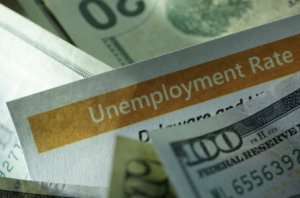Ads
The United States economy is experiencing mixed results as it continues to add jobs, but faces challenges related to trade uncertainty and potential economic slowdowns under President Donald Trump’s administration. The Bureau of Labour Statistics reported that in June, the US added 147,000 jobs, surpassing expectations, and the unemployment rate dropped to 4.1%.
While the increase in jobs may seem positive on the surface, there are underlying concerns about the sustainability and quality of these job additions. The report indicated that job growth is limited, with only a few industries showing significant potential for growth. The majority of the job increases in June were seen in healthcare, leisure and hospitality, and state and local government. However, experts cautioned that the spike in government jobs may be artificially inflated, leading to a skewed representation of the overall job market health.
Private sector firms added just 74,000 jobs in June, marking the weakest monthly rise since October 2024. Economists attributed this slowdown to a combination of factors, including the impact of tariff hikes, restrictive monetary policies, and concerns over escalating trade wars. These factors have been putting pressure on labour demand, resulting in slower job growth in key industries.
Furthermore, the technical adjustments made by the BLS to account for seasonal fluctuations may have improved the overall job statistics artificially. While the unemployment rate dropped to 4.1%, the labour force participation rate also fell, with Black unemployment rising to 6.8%, its highest rate since January 2022. This increase in Black unemployment is seen as a potential early indicator of an economic downturn.
Average hourly wages grew slightly in June, but overall pay growth was weaker than projected by experts. This raises concerns about the overall financial health of workers in the US and their ability to keep up with increasing costs of living. The shrinking labour force may be contributing to the reported drop in the unemployment rate, as fewer people are actively seeking employment.
Layoffs remain low, indicating that companies are hesitant to let go of their employees even as economic uncertainties persist. Despite concerns about the impact of Trump’s economic policies, the stock market saw gains, with the Dow, Nasdaq, and S&P 500 all rising in response to the jobs report.
The Federal Reserve has been closely monitoring economic data to determine its next steps regarding interest rates. While the report did not provide any immediate triggers for rate cuts, concerns remain about how slowing labour force growth and restricted immigration policies may impact the overall economy. If the breakeven level of jobs needed to maintain pace with population growth continues to rise, there may be inflationary pressures that could influence the Fed’s decisions on interest rates.
Overall, the June jobs report highlights both positive and negative trends in the US economy. While job growth remains steady, concerns about the quality of jobs, wage growth, and potential economic downturns loom large. The coming months will be crucial in determining how these factors will shape the direction of the US economy and the Federal Reserve’s policies.






